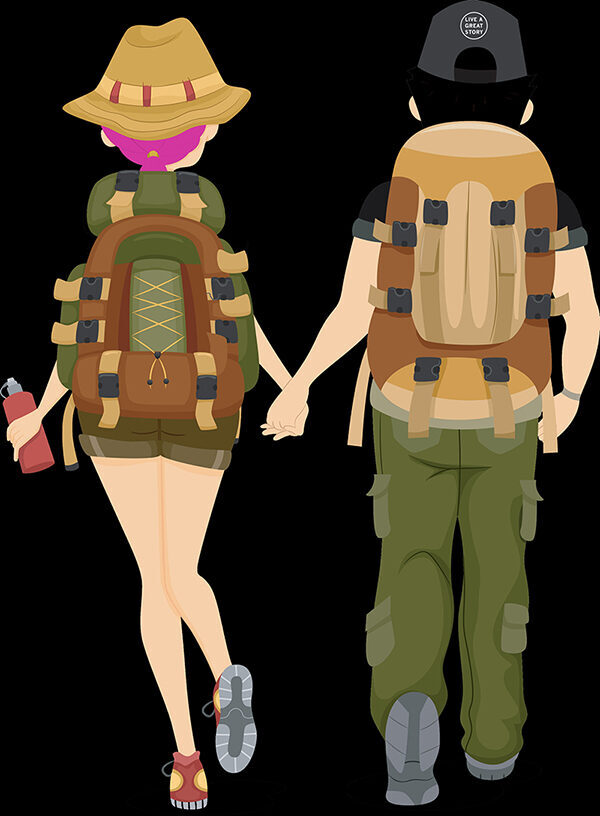building a campfire
When cooking outdoors, there are a variety of heat sources to choose from. This article will introduce you to the three most common you can find, bring, or create at your camping area, and the necessary tools for each.
The campfire is an ancient, time-honored circle “ceremony” around which people connect with themselves, and each other, and the natural world around them. Even today, a camping trip isn’t complete until we’ve saturated our hair and clothes with the smell of wood smoke, drawn warmth and light into our very souls, and watched our life’s many worries be swept up and away like sparks into the night sky. Use these guidelines and safety tips to maximize your campfire experience.
Note: Before heading out to the great outdoors, check if the location you are going has any fire restrictions or order in place that will prohibit the use of an open flame. Some of these tips have to be modified if camping in a protected area.
- Clear 10 feet of tall, hanging or loose debris that could catch fire, such as branches, grass, leaves and your gear. (Look around, Look Up and be prepared).
- Dig a hole about 1 foot deep and 3 feet wide, you will need that shovel (if a fire ring is provided use it).
- Make a circle border of large, dry rocks around the pit (if a fire ring is provided use it).
- Loosely pile about four wads of newspaper (tinder) in the center of the fire pit. Keep extra newspaper on hand. I personally use on all my adventures Tinder Shreds made by Zippo. These easily ignites with spark or flame to get a fire started in seconds, and each tinder shred burns for up to 8 min. to ensure your fire gets started and stays lit.
- Before starting a fire outdoors, review Leave No Trace principles and safe extinguishing practices. Always check the land manager’s current regulations for information on where to build a fire, appropriate wood to use and potential burn bans.
Picking A Location
- Don’t build a campfire if its prohibited on the property.
- Don’t build a campfire in dry or drought conditions; a forest fire is far worse than cold feet or cold dinner.
- Find out if the area has existing fire rings or pits you can use to minimize impacts to the land.
- If you’re creating a fire pit, chose an open site free of low-hanging branches, plant life, and other flammable objects. Be sure the fire pit is at least 20 feet from any tent. As someone who has camped in many National Forest and or National Parks or State provided camp grounds, this can sometimes be difficult cause camping spaces are setup in a away that makes it difficult to get that 20 feet.
- Chose a spot that’s protected from strong gusts of wind.
Maintaining Your Camp Fire
- Your Wood Pile! Stack logs upwind from the fire so you don’t risk them catching on fire from a stray spark. Add them to the fire as needed.
- Keep your fire at a manageable size. Have a source of water, a bucket, and a shovel close by at all times in case the fire gets out of control.
- Don’t burn items that can explode, shatter, and/or create harmful fumes or dust, such as aerosol cans, pressurized containers, glass or aluminum cans.
- Never leave your campfire unattended and make certain children and pets are supervised near the fire.
Putting Out Your Campfire
I sometimes go camping when the weather is below freezing, and use a tent that allows me to have a wood burning stove for heat, cooking inside of my tent. This sort of camping requires some other safety considerations, and gear and definitely goes counter to the keep the fire 20 feet from your tent mantra. But when done appropriately it makes camping no matter what mother nature throws at you, or the time of year when camping is the last thing most people want to do possible as long as you follow these rules.
- Allow the wood to burn completely to ash, if possible.
- Pour lots of water on the fire until the hissing sound stops.
- If you don’t have water, bury the fire and embers with dirt or sand. Use a shovel to scrape embers from sticks and logs to make sure there are no exposed or smoldering embers left behind.
- Embers too hot to touch are too hot to leave. Continue adding water, dirt, or sand and stirring with a shovel until all the material is cool.
